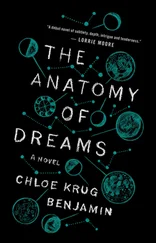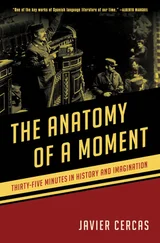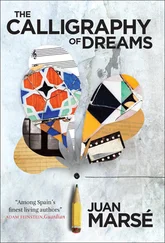Finally, I rolled the cart out of the closet, making sure the wheels were working smoothly — it was a finicky old cart; we needed a new one — and began to arrange the tray. From a small cabinet I took out the EEG paste and sleep mask, the tape and black marker. I arranged the electrodes, sensors, and lead wires at the back of the tray, and beside them the cotton swabs, alcohol pads, prepping gels and pastes, and my gloves. The hair clips I placed in a pocket at the front of the tray; sometimes ten or twelve were necessary if the patient had long hair, but I didn’t think we’d need more than four for a little boy. In Room 76, Gabe rolled in the camera and turned on the audio system.
We kept an eye on each other through the window, making sure the other person was getting along okay and didn’t need help. Every so often, one of us offered a smile, and the other one returned it before getting back to work.
By seven thirty, we knew Keller had retrieved Jamie from the waiting room and brought him to Room 72, his public office, which had a leather couch and a basket full of toys for children. Keller had been working independently with Jamie for eight weeks now, teaching him the same things he had taught Gabe and me in Snake Hollow. “Lucid dreaming can be learned,” Keller had told us, standing in the library. The first step was to improve dream recall — patients who developed this skill were almost always able to remember their lucid dreams after waking. Keller also showed us how to recognize dream signs: ill-defined light sources, repetitive symbols, bizarre text or numbers, and flashing lights, which in our study took the form of LEDs. Some researchers used mild electric shocks to indicate a dream state to their subjects, but Keller eschewed this method. He preferred that our patients be able to recognize their dream states cognitively, not physically.
At eight o’clock, I walked down the hall to the water fountain and filled my bottle. The door to Room 72 was cracked, and I could hear Keller talking in the playful voice he used with younger patients.
“Haven’t been drinking any alcohol, I presume?”
There was a woman’s laugh, though I couldn’t hear the child.
“No,” said the woman, an older voice, gravelly. “Hasn’t been any of that.”
He was getting close to the end of the questionnaire. Gabe popped his head out of Room 76, where the bed was stationed, and I nodded, holding up five fingers.
After several minutes, Keller came out of the office, holding a clipboard with the finished questionnaire. Behind him was a woman who looked to be in her seventies: she had a bushel of wiry, shoulder-length gray hair and quick, sweeping eyes.
Gabe and I stood in the doorways to Rooms 74 and 76 like butlers guarding the entrances of a fancy party. The woman held the hand of a small boy, who was partially obscured behind the wide swath of her hips. He wore loose pants printed with brightly colored sea creatures and red socks; Keller must have collected his shoes.
“You must be Jamie,” said Gabe. He stepped forward and squatted down in front of the older woman, peering through her legs at the boy.
“That’s Jamie-boy,” the woman said. “Don’t be shy, sweet.”
But I could tell she was hesitant. Keller’s research was experimental, still in its early stages. Most of our patients had exhausted the range of traditional treatment options, but it still wasn’t unusual for them to be skeptical of our methodology.
“My research assistants,” said Keller. “Gabriel and Sylvia. This is Jamie’s grandmother, Rosemarie.”
“Sylvia,” said Rosemarie. “A pretty name.”
“Thank you,” I said, though it didn’t feel like mine. Keller only used it when introducing me to patients.
“Spectacular pants you’ve got there,” said Gabe as Jamie moved slightly into the open. “What’s that scary thing with the big old fangs? A piranha? No — a blowfish?”
“A blowfish,” said the boy solemnly. He was leaning against the side of his grandmother’s leg.
“Ah,” said Gabe. “A blowfish. Just as I suspected. Also known as a puffer. Or a toadfish.”
He filled his cheeks with air and flared his nostrils. The boy tipped his head and released a short, breathy noise, more a wheeze than a laugh. I didn’t know how Gabe knew about blowfish, but I wasn’t surprised. He was always picking up bits of odd knowledge, coming back from the library with books about metallurgy or obscure British prime ministers or the First Transcontinental Railroad, as if building a base of knowledge that would help him if his work with Keller ever ended.
“They’re kind of freaky looking, aren’t they?” Gabe asked, still squatting.
“No,” said the boy, but he was smiling.
“A fair point,” said Gabe. “Freaky looking — that’s not the right way to put it. This fellow here”—he pointed to the blowfish on the ankle of Jamie’s pant leg—“this fellow is downright handsome. A nice monster — that’s what he is.”
“A nice monster,” said the boy.
One year ago, we’d learned, he was riding with his family in a miniature steam train at the Lincoln Park Zoo in Chicago when the train made a sharp turn toward the bachelor monkeys. A sudden leak in the firebox forced a blast of flame out of the door, and though the train was evacuated as soon as it came to a halt, those who sat closest to the engine — a father from southern Illinois, along with Jamie’s parents and half sister, a college student at the University of Chicago — were already dead. It was a freak accident: later, investigators found that a new zoo employee had accidentally packed the firebox with three times the normal amount of liquid fuel.
Bystanders ran to the train to help. One woman, an off-duty firefighter, retrieved Jamie. He had been sitting behind his sister, sheltered from the worst of the blaze, and only his left hand had burned. Doctors at Northwestern Memorial Hospital were able to preserve the use of his fingers, but his skin was waxy and scarred.
Now Jamie lived with Rosemarie at her apartment in Sun Prairie, Wisconsin. For ten months, he had been suffering from night terrors that made him scream in his sleep and bolt out of bed. In the morning, he remembered nothing. For the past two months, Keller had tried to improve Jamie’s dream recall — when he woke up each morning, Rosemarie was to gently ask what he remembered, then record his reply on a notepad — but the boy was inconsistent and difficult to read. Still, he seemed to understand the concept of dream signals and knew how to respond to our LEDs, so Keller believed it was worth attempting an overnight study. If we could get him to start dreaming lucidly, his recall ability would likely improve.
The boy yawned, his shoulders quivering.
“It’s past your bedtime, isn’t it?” said Rosemarie, putting a hand on his head. “Usually he’s in bed by eight. But tonight is a special night.”
“How late do you get to stay up tonight, Jamie?” asked Gabe.
“Till nine,” the boy said.
“That’s right,” said Gabe. “Till nine. And it’s already eight fifteen. I think it’s about time we showed you your bed. Bigger than your bed at home, I’d expect.”
“How much bigger?” asked Jamie. He hadn’t moved from beneath his grandmother’s hand, but his eyes were focused on Gabe.
“Well, that depends on the one you’ve got back home,” said Gabe. “I think you’ll have to tell me how much bigger it is. How does that sound?”
He held out his large, worn hand.
“Okay,” said Jamie, though he kept both hands behind his back.
“Just a minute now,” said Rosemarie. She looked from Keller to Gabe, and back to Keller. “Now, this is where I — say good night?”
Читать дальше












